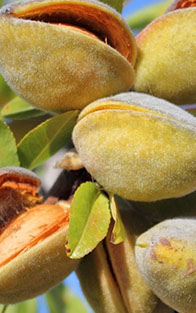TECHNICAL INFORMATION
FOOD HEALTH & SAFETY
Our Analyser can be installed inline to both optimize electronic sorters and at the same time, populate standard industry QA reports. We are engaged with UniSA on further research to develop a method that will allow every container to pass Eu regulations or other benchmarks as required.
Our aflatoxin B1 test is highly accurate, fast, in-house, non-destructive and involves no dangerous chemicals – unlike current wet lab methods.



DETECTING AFLATOXIN B1
It's important to understand that while Aflatoxin B1 is a known carcinogen, our technology would be applied to the said crops foremost as a means of superior compliance to QA standards throughout the western world. For these crops produced with modern methods it is all about compliance and eliminating minuscule amounts from accumulating in the liver. The Surenut Analyser detection of aflatoxin positive kernels at the processing stage eliminates the risk well before the customer receives their product.
The standard wet lab analysis currently used throughout the world requires a sample of 20kgs which is destroyed in the process. This is not a viable option in areas where harvest is measured in kilos not tonnes.
HOW IT AFFECTS CONSUMERS
The average consumer won’t notice any difference in the Western world because current QA testing lowers the levels sufficiently. The World Health Organisation has a huge priority to reduce the Aflatoxins in third world countries. The Aflatoxin can be on the corn, the pig and cows eat the corn and pork and cattle products are consumed, and then it becomes part of the food chain and can accumulate in a person’s liver. Or more tragically in corn fed to cows, mothers and babies drink the cows milk and babies can get aflatoxins from both breast milk and cow’s milk.
For instance is some African countries it is not uncommon for corn and maize crops to be contaminated at levels many times greater than western QA standards, leading to Infant mortality as a result of ingesting fatal concentrations via their mother’s milk and herd milk.
WHAT IS AFLATOXIN B1?
Aflatoxins are produced by certain soil fungi that can exist on agricultural crops such as maize (corn), peanuts, cottonseed, and tree nuts. The main fungi that produce aflatoxins are Aspergillus flavus and Aspergillus parasiticus. Aflatoxin-producing fungi can contaminate crops in the field, at harvest, and during storage.
Aflatoxins are difficult to sample because of their low incidence. However, they are also difficult to treat because of their stability against heat, physical and chemical treatments.
Livestock feed contamination can also pose an extra hazard for food safety due to possible carry-over of mycotoxins to animal derived products such as milk, meat and eggs leading to mycotoxin intake by humans. Until our discovery, there have been no treatment methods available.


